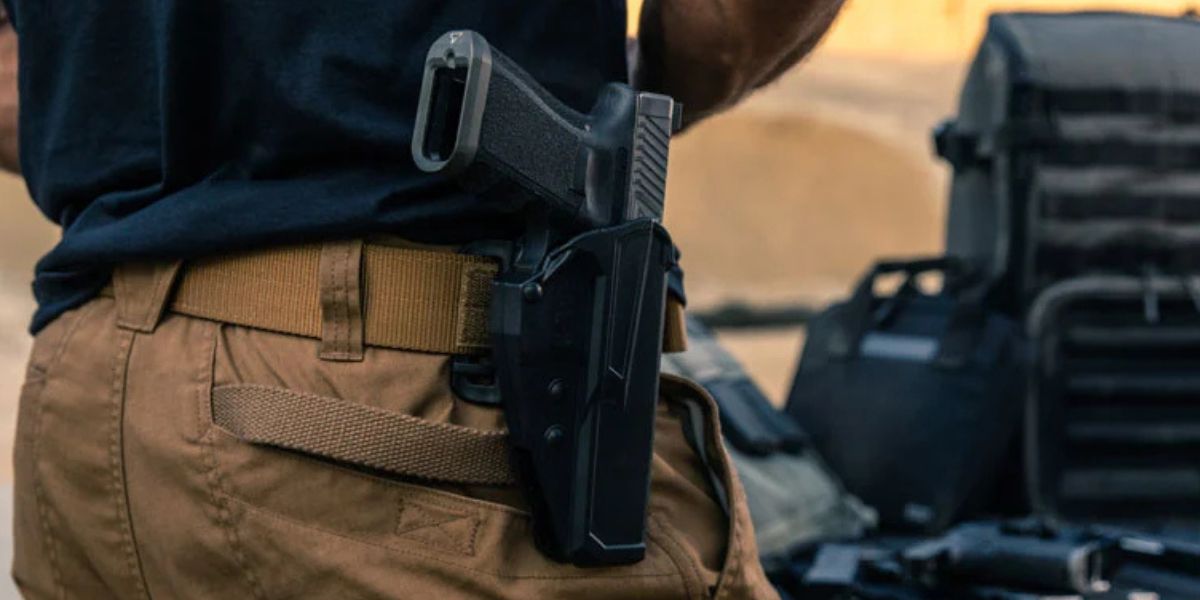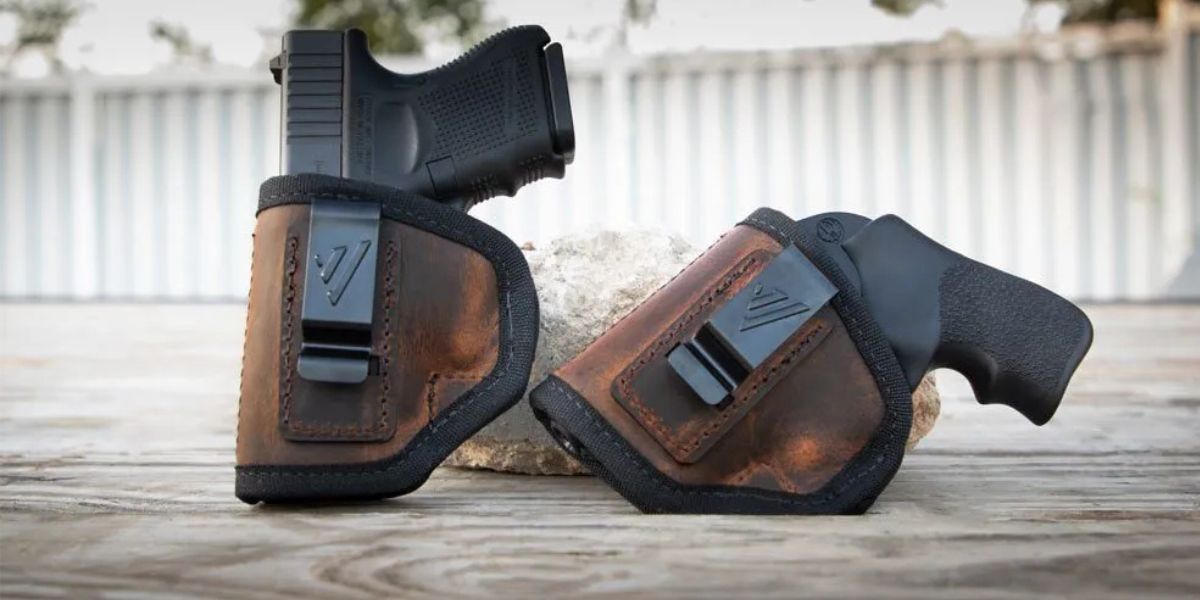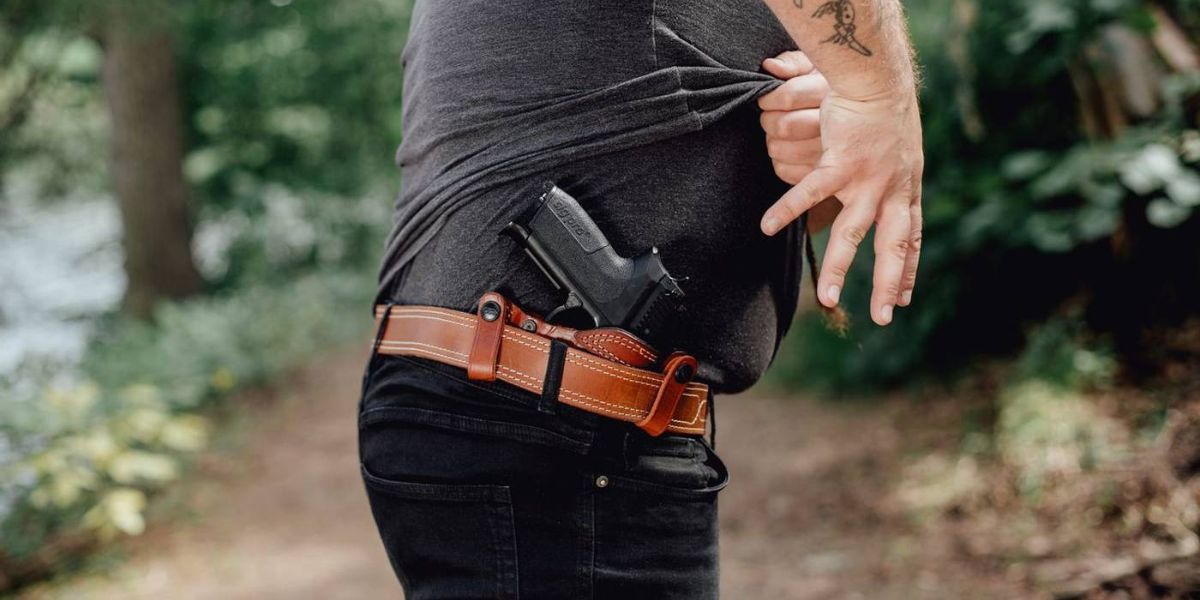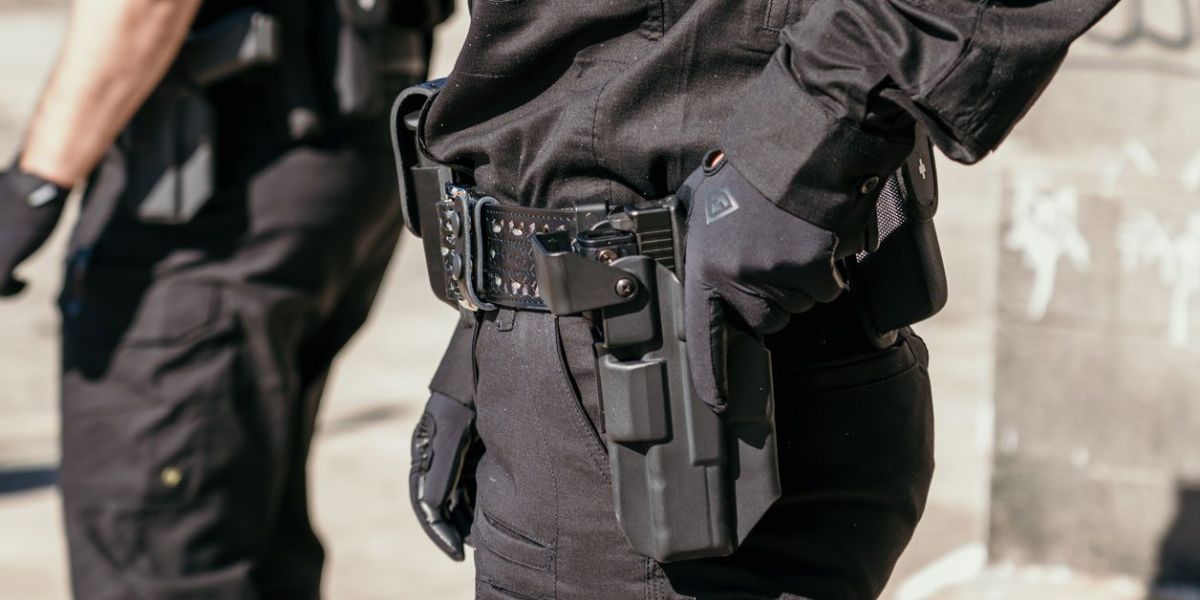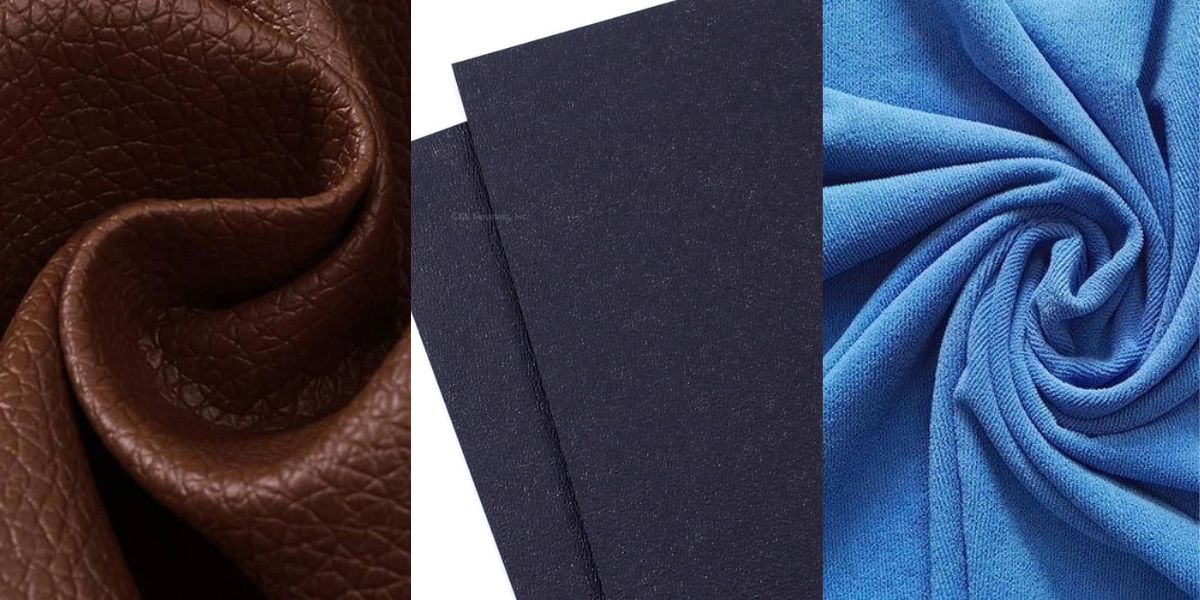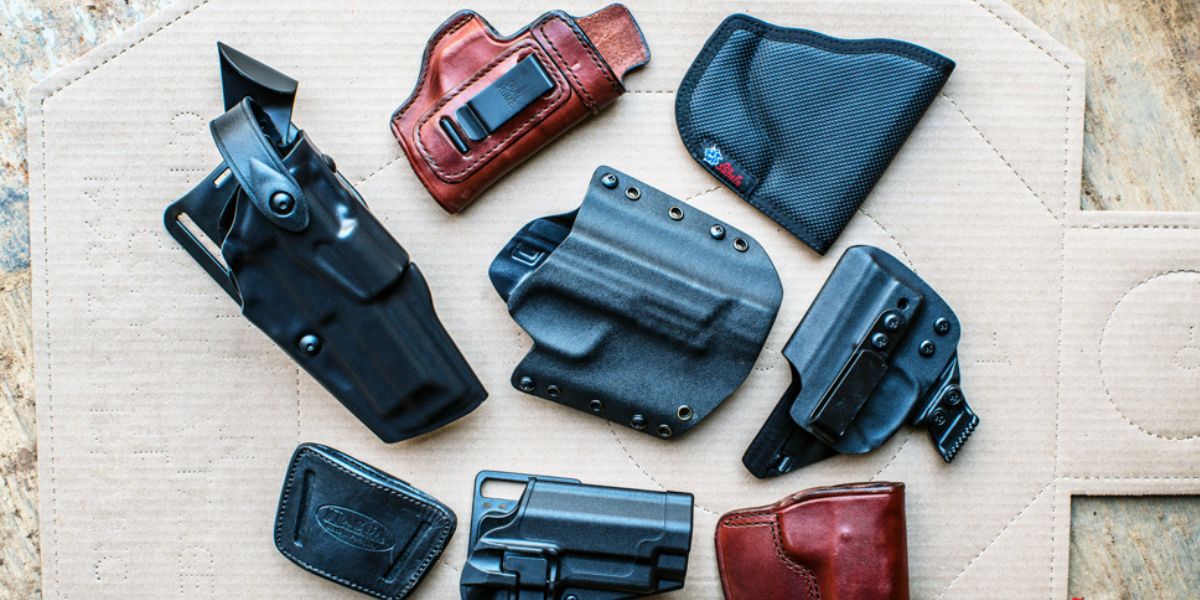Most people take a long time choosing a gun, but when choosing the holster, they make a quick choice. However, choosing the right gun holster is as important as choosing the right gun. It’s not just an accessory but essential tactical gear that can impact your safety, ease of handling, and how quickly you can access your gun when needed. The holster should fit your gun, your style, and your specific needs.
Here’s a simple guide to consider when choosing the ideal gun holster.
Types of Gun Holsters
There are three types of gun holsters:
Concealed Carry Holsters
Open Carry Holsters
Duty and Tactical Holsters
Concealed Carry Holsters
These holsters are designed to be low profile. They don’t just hold your gun safely but also keep it hidden. They are ideal for small, short-barrelled handguns. Usually, these holsters are made of leather and doesn’t have any bulky flaps or padding. Here, the type of gun also matters, if you choose big and long-barrelled revolver, it will be difficult to hide.
Inside the waistband (IWB) holsters are most popular option for concealed carry. These holsters attach to belt using a loop or a clip and holds the gun inside the waistband of your pant. Although it is great for hiding gun, as only grip and back of the slide are visible above waistband, they can be uncomfortable, as it exposes the weapon to perspiration. They are best suited for slim and compact semi-automatic pistols.
Outside waistband (OWB) holsters are suitable for larger handguns and revolvers. These holsters often have wide wings that secure them firmly to your belt.
Shoulder Holsters: If you are spending a lot of time driving or sitting, then a shoulder holster can be a great alternative as waistband holster can be uncomfortable. These holsters have loops over each shoulder, connected by a rear strap that help evenly distribute the weight. These holsters can be easily hidden under open jacket, allowing for quick draw when seated. Many of them even have a magazine pouch opposite the holster. Another advantage is that they are ideal to carry larger revolvers concealed.
Pocket Holsters: It is easy to carry a gun in your pocket, but it can easily snag on clothing or other items in the pocket and slow your draw or even cause accidental discharge. Pocket holster can be a solution as it covers the gun to prevent snagging and allow to draw smoothly whenever needed. Most pocket holsters are not attached to pockets but use friction to hold them in place, making it easy to switch them between coats.
Ankle Holsters: They are used for a backup gun like a subcompact semi-auto or a short-barreled revolver. Although they are great for concealment, drawing from an ankle holster is slow and can be uncomfortable.
Belly Band Holsters: It is a wide elastic belt with a built-in holster, which are designed to conceal a handgun under an untucked shirt. They are available in different styles and allows you to choose the position of gun anywhere above the belt to high on the chest. Some set up hold the gun in front while others place it under the armpit. Although they can be a great choice for concealment, they can be uncomfortable, as they need to fit tightly to keep the gun secure.
Open Carry Holsters
Belt Holsters: These are the preferred option for open carry as they ensure the gun is secure, out of the way and easily accessible. Since concealment isn’t required, these holsters offer more comfortable design and has additional retention options to stop the gun coming out of holster until needed. An open-topped belt holster with a strap or retention device is best choice for open carry.
Shoulder Holsters: Sometimes when belt holster isn’t ideal for open carry, especially when you spend a lot of time sitting or driving, you can opt for shoulder holsters. These holsters work best for both concealed and open carry, only the difference with open carry is that you don’t need to wear a jacket to cover it.
Duty and Tactical Holsters
While belt holsters are used by law enforcement and military, drop leg, chest and shoulder holsters are better choice depending on your needs. If you use long body armour, drop leg holsters are best choice. Drop leg holsters are suspended from belt at around mid-thigh and stay in place with strap around the thigh. Many military belt holsters can be converted to drop-leg holsters with extension kits, which include a thigh panel with a PALS grid and retention straps. Again, these are a bit controversial as some people find it easier to draw from, while others find them awkward. Like belt holsters, drop leg holsters don not secure the weapon tightly, which can cause the gun to bounce while running and if crawling, they can shift under thigh and pick up dirt.
Shoulder holsters do not work well with full combat load, as can be awkward to draw when armor is loaded with pouches. For troops with lighter gear, it is easy to draw while seated or driving. However, wearing shoulder holster over a uniform can appear aggressive in certain situation. So, in such situation, chest holster come in handy. These holsters attach to the PALS grid on MOLLE-compatible armor and position the gun’s grip over sternum, making it easier to draw. This setup is useful for drivers or vehicle crewman.
Holster Materials
Gun holsters come in several materials, each of which have their own advantage and disadvantages.
Leather: This is the traditional and popular holster material. It’s durable, versatile and even looks good. They are good for concealed carry since it is flexible and molds to both body and the gun over time, without adding extra weight. However, leather needs proper maintenance. If it is not properly cared, it can absorb moisture from rain or sweat, making it uncomfortable to wear, which can affect the gun as well.
Kydex: Other materials used for holsters are kydex and other rigid plastics. They are tough and can be molded into different shapes, and provide excellent protection to the gun. Their rigidity makes them ideal for holsters with retention systems, and they are typically molded to fit a specific firearm. However, the main disadvantage of rigid plastic is it is often uncomfortable for concealed carry. It doesn’t mold with body and add weight. One advantage over leather is they need little maintenance and do not absorb water, sweat or dirt.
Synthetic fabric: They are usually strong and require minimal maintenance, and with most being waterproof and durable. Most of them have padding for comfort. A well-made nylon holster can be bulky, making it less suitable for concealed carry. Compared to kydex, they are also harder to clean.
Retention Methods
This is yet another important consideration to ensure your gun is secure in its holster. Retention is measured in levels. Higher levels provide more security, but can slow down your draw. Here are the retention levels that you need to consider
Level 1 Retention: This is based on friction, which is common in most concealed carry holsters. The gun should fit the holster properly to ensure safety and effectiveness.
Level 2 Retention: This includes thumb break straps which can be quickly released and thumb loops, which also use friction to secure the gun.
Level 3 Retention: This involves a trigger guard lock, which features a hook or post that locks into the gun’s trigger guard. Strap and friction combined achieve level 3 retention.
Level 4 Retention: This is the most secure level, which involves gun butt flaps along with friction and the other three retention methods. This provides excellent protection against dust, rain and mud, but can be slower to open when you need to draw your gun.

